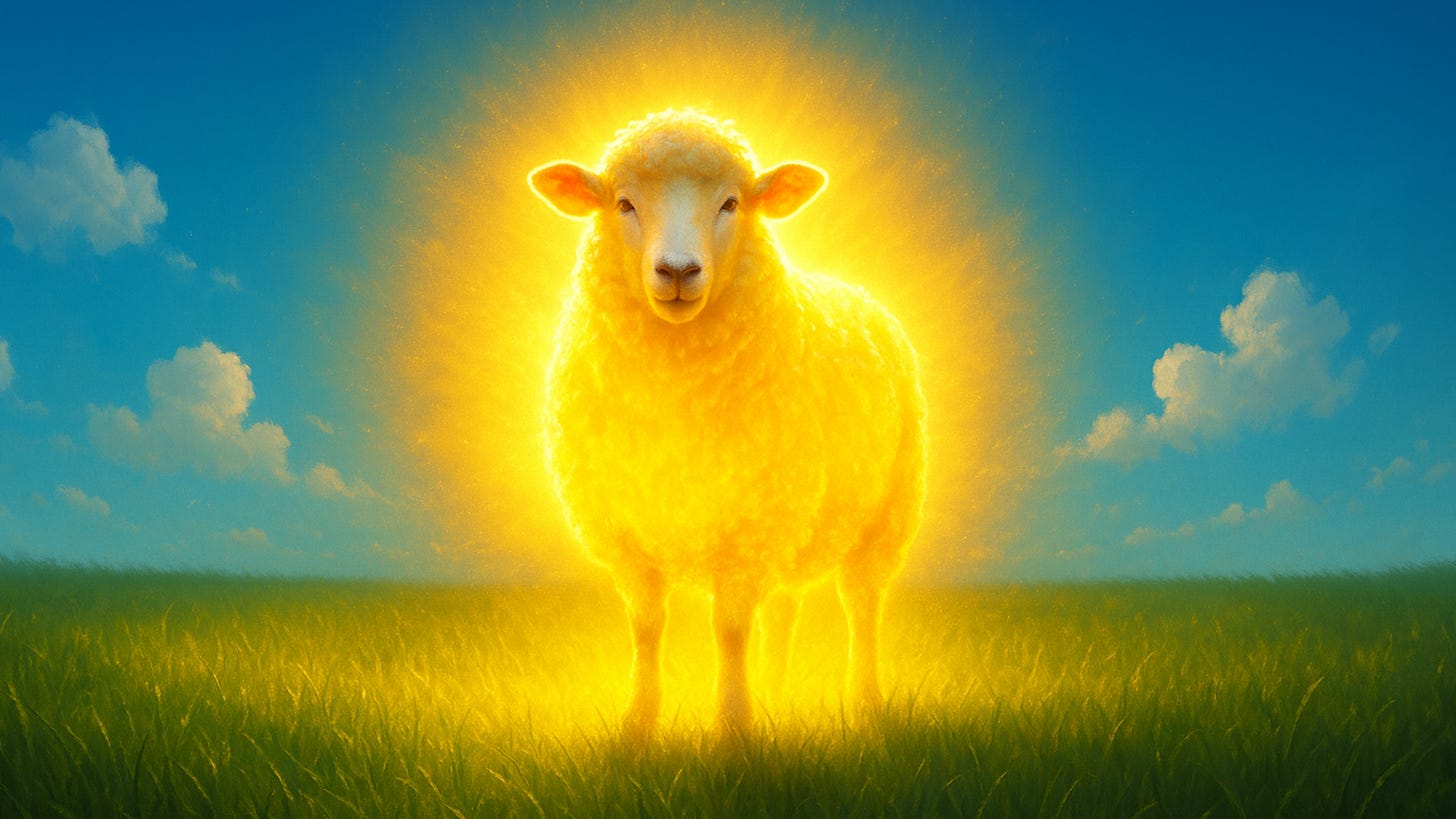Solar Sheep
Energy production across Virginia is getting greener with the help of some four-legged friends
In Northern Virginia, Dominion Energy is replacing gas-powered mowers with flocks of sheep at its solar farms—a practice known as “lambscaping”—to reduce emissions, restore soil health, and reshape land management. What appears to be a PR stunt is actually a powerful model of regenerative agriculture and energy production that’s revitalizing rural economies, supporting biodiversity, and mitigating public resistance to solar infrastructure.
WASHINGTON, D.C. — Just outside of Washington, D.C., in Fauquier County, Virginia, a herd of 125 sheep is transforming the way we think about energy, agriculture, and the environment. At Dominion Energy’s Remington Solar facility, the sheep—under the care of Carrington Farm’s Bill Renaud—aren’t just grazing. They’re replacing lawnmowers, reducing emissions, restoring soil health, and reshaping the future of land management.
This is lambscaping. And for the first time, Dominion is bringing it to Northern Virginia—a region not typically associated with pastoral experimentation. The flock clears 30 to 40 acres every few days, keeping vegetation in check around thousands of solar panels. It’s eco-friendly, cost-effective, and oddly revolutionary. “It’s less fuel, it’s less labor,” Renaud says. And soil samples from the site show a 3–4% boost in organic matter—a marker of healthier, more resilient ground.
What might appear to be a quirky PR stunt is, in fact, part of a serious strategy to decarbonize operations while reimagining what working land can be. It’s not just sheep on a field. It’s a blueprint for a different kind of energy transition—one that doesn’t leave nature, or people, behind.
"It's a win-win for everyone involved,” said Renaud.
The Case for Lambscaping
Across Virginia, that blueprint is gaining traction. In Sussex County, Jess and Marcus Gray of Gray’s LAMBscaping shepherd flocks through Dominion Energy’s solar farms, guided by their border collie, Dot. The sheep graze on clover and wildflowers while fertilizing the soil and eliminating the need for gas-powered mowing equipment.
This type of agrivoltaics—dual-use land that produces energy while supporting agriculture—offers a lifeline for small and mid-sized farmers. Dominion pays the Grays a regular monthly fee, a rarity in an industry often defined by commodity price swings and seasonal income. In Climax, near Pittsylvania County, a flock of 165 sheep is already at work on a 1,000-acre solar site. That number is expected to triple by spring. In Texas, one farmer who had lost $200,000 growing cotton reported earning a $300,000 profit grazing sheep on solar land.
For newer farmers or those shut out of high-priced land markets, solar grazing offers access without ownership and a reliable income stream. It’s a model of regenerative economics, where the land supports multiple uses, and rural livelihoods are reinforced rather than displaced by green infrastructure.
The environmental case is equally strong. Sheep are low-impact, heat-tolerant, and ideally suited for solar installations, where they can graze beneath panels and reach vegetation machines often miss. Their hooves lightly aerate the soil; their manure enriches it. No fuel required, no herbicides needed. Dominion reports that sheep cover up to 75% of the vegetation needs at their solar farms. Machines are now the backup, not the default.
And unlike mechanical mowing, grazing helps restore natural ecosystems. Wildflowers and native grasses return. Pollinators like bees and butterflies flourish. Ground-nesting birds, including quail, find habitat in the safe, low-grass understory left behind. It’s a quiet rewilding—tucked beneath a canopy of solar panels.
In a time of increasing drought and climate disruption, sheep also bring resilience. Their hardiness in heat, adaptability across various landscapes, and consistency offer a low-tech solution to a high-stakes problem: maintaining solar output without contributing to environmental degradation.
Soft Power, Stronger Communities
Sheep offer another, often overlooked benefit: they change the story. Large solar farms can provoke backlash in rural communities. People worry about aesthetics, property values, or cultural displacement. But when a flock of sheep appears in the mix, public perception softens. It’s no longer just industrial infrastructure—it’s working land. They’re familiar, approachable, and even beloved.
Dominion’s expansion into Northern Virginia is especially telling. Bringing the practice closer to an urban and suburban population shows that lambscaping isn’t just for the backcountry. It can work—and be welcomed—wherever solar is needed. In an era of polarized climate and energy debates, these small, sensory cues matter. They humanize the transition.
“We absolutely love what we do and that’s what I tell everybody,” said Jess Gray. “The best part about my job is when I get to come here and I watch the girls walk around. It’s so peaceful. Now, I know when people say when you can’t sleep, count sheep, we do it all the time.”
The Path Forward
Lambscaping isn’t a plug-and-play solution. Flocks must be rotated to prevent overgrazing. Predators require the presence of guardian dogs, like the Great Pyrenees. And scale is still a challenge, because demand is growing faster than herds.
But that gap is also an opportunity. Imagine job training programs for solar shepherds—young people learning to work at the intersection of food, fiber, and energy. Imagine partnerships with land-grant universities, cooperative extension services, or conservation corps. Lambscaping could be a gateway not just to cleaner energy, but to a more just and inclusive agricultural economy.
Beyond sheep, the broader promise of agrivoltaics is coming into view: combining solar with pollinator gardens, experimental crop plots, and even cattle in some regions. What Dominion has begun in Virginia could serve as a national model—an exportable playbook for dual-use innovation.
From Pittsylvania to Northern Virginia, lambscaping is more than a novelty—it’s a new kind of infrastructure. One that doesn’t just generate kilowatts, but restores topsoil, supports pollinators, reduces emissions, and revives rural economies.
If you enjoyed this article, please consider sharing it with your network.






This is an amazing idea, and I appreciate this article as I haven’t read this anywhere else. I’ve also heard that goats are ideal for fields overrun with invasive plants like kudzu and Japanese Knotweed, which defy other nontoxic means of control.